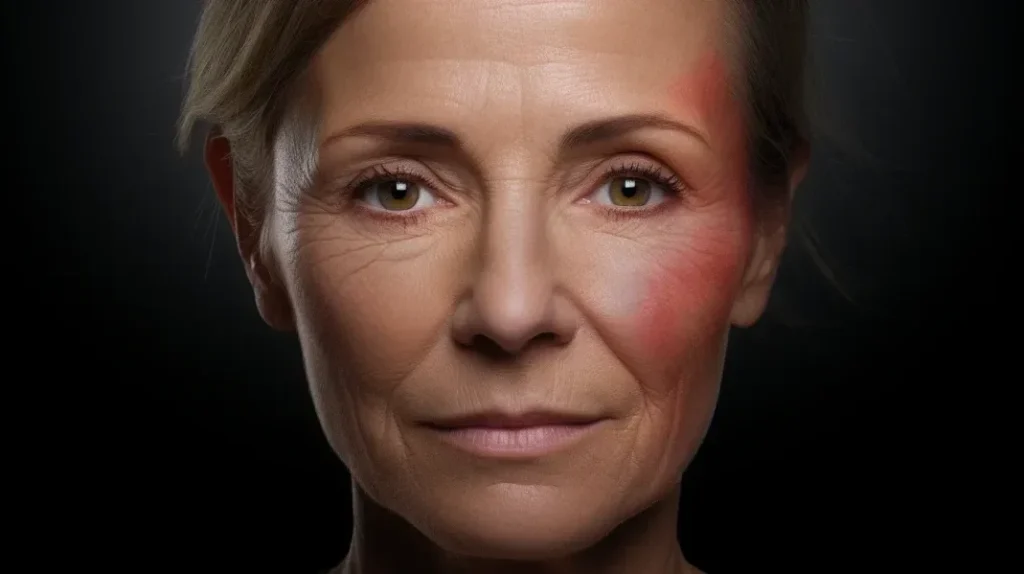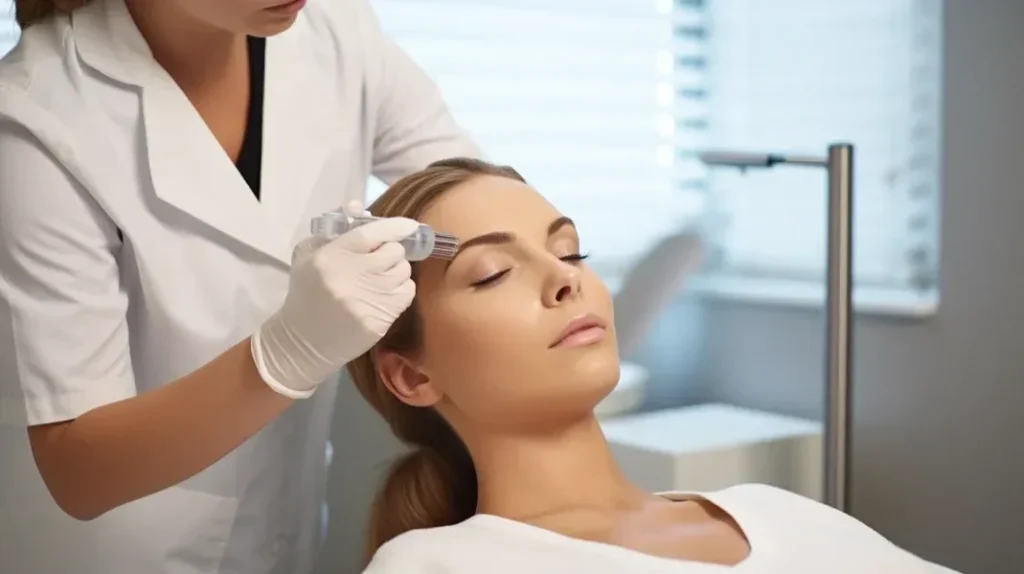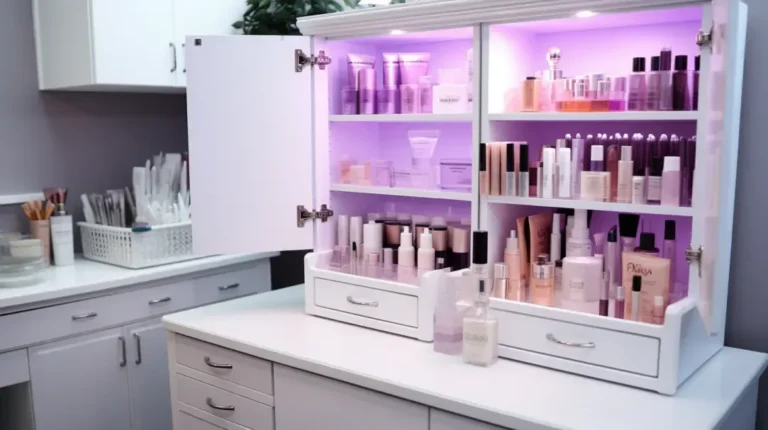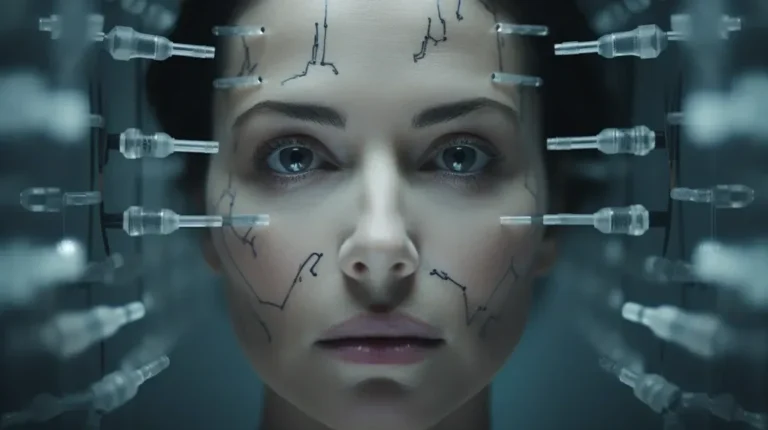Botox and Laser Treatment: Combining Skincare Therapies
Are you tired of seeing those stubborn fine lines and uneven skin tone whenever you look in the mirror? What if we told you there’s a way to address multiple skin concerns simultaneously?
The combination of Botox and laser treatment has gained significant popularity in the world of skincare, and for good reason. But how exactly do these therapies work together, and what benefits can you expect?
In this discussion, we will explore the exciting possibilities that arise from integrating Botox and laser treatments, revealing the secrets behind achieving younger-looking, radiant skin. So, get ready to uncover the synergistic effects of these two powerful skincare techniques and discover why they might be the key to unlocking your ultimate skincare goals.
Key Takeaways
- Combining Botox and laser treatments can provide effective skin rejuvenation techniques.
- Proper scheduling and sequencing of these treatments are essential for optimal results and minimizing risks.
- Patient experiences and testimonials can provide valuable insights into the combined therapies.
- Ongoing advancements in technology and shifting patient preferences are shaping the future of combining Botox and laser treatments.
Benefits of Combined Botox and Laser Treatment

Combining Botox and laser treatments offers a multitude of benefits for individuals seeking enhanced facial aesthetics and rejuvenated skin. When used in conjunction, these sequential skincare treatments have a synergistic effect, yielding superior results compared to individual therapies alone.
One key benefit of combining Botox with laser treatments is the enhanced improvement in skin texture and tone. Botox injections work by relaxing the underlying facial muscles, reducing the appearance of wrinkles and fine lines. Laser therapy, on the other hand, targets specific skin concerns such as sun damage, acne scars, and uneven pigmentation. By utilizing both treatments, individuals can achieve a more comprehensive rejuvenation of their skin, resulting in a smoother, more even-toned complexion.
Moreover, research has shown that Botox can have a positive impact on laser therapy results. By reducing muscle movement in the treated area, Botox helps to minimize the risk of complications and allows for more precise targeting during laser treatment. This can lead to improved efficacy and better overall outcomes.
Understanding Treatment Scheduling and Timing

Achieving the best results from combined Botox and laser treatments requires careful consideration of treatment scheduling and timing. Understanding the ideal sequencing, intervals between procedures, and coordinating these therapies is crucial for maximizing benefits and minimizing risks. Here’s a guide to help navigate the timing and scheduling of these treatments.
1. Optimal Treatment Sequencing:
- Botox First: Typically, Botox injections should be administered first. Botox works by relaxing facial muscles, which can complement the effects of laser treatments aimed at skin resurfacing.
- Healing Period Post-Botox: Allow a healing period after Botox injections, generally around 1-2 weeks, before undergoing laser treatments. This ensures the Botox has settled and minimizes potential interference with the laser process.
2. Time Intervals Between Procedures:
- Allow for Botox to Take Effect: It’s essential to wait until the full effects of Botox are visible, which can take up to 14 days.
- Laser Treatment Post-Botox: Once Botox has taken effect and the treated area has healed, laser treatments can be scheduled. This sequence optimizes the skin’s condition for laser procedures.
3. Coordinating Multiple Skincare Therapies:
- Consult with Specialists: Coordinate with dermatologists or cosmetic specialists who can advise on the best sequence and timing based on your skin type and treatment goals.
- Consider Skin Recovery Time: Ensure there is enough time for your skin to recover between treatments to prevent irritation or damage.
- Personalized Treatment Plan: Each individual’s skin responds differently, so treatments should be tailored to personal needs, considering factors like skin sensitivity and desired outcomes.
4. Monitoring and Adjustments:
- Regular Assessments: Monitor the skin’s response after each treatment. Adjustments in scheduling might be needed based on individual reactions.
- Follow-up Appointments: Schedule follow-up appointments to assess the effectiveness of the treatments and to plan further sessions if needed.
5. Post-Treatment Care:
- Skin Care After Procedures: Follow specific skincare routines post-treatment, including sun protection and gentle skincare products, to enhance recovery and results.
6. Safety and Efficacy:
- Safety First: Always prioritize safety, especially when combining treatments. Discuss potential risks and side effects with your healthcare provider.
- Efficacy: The goal is to achieve the most effective results. An experienced professional can guide you on how to maximize the benefits of combined treatments.
Minimizing Risks and Side Effects

When combining Botox and laser treatments, implementing strategies to minimize risks and prevent side effects is crucial for patient safety and effective outcomes. Here are vital measures to ensure these objectives are met:
1. Comprehensive Patient Evaluation:
- Medical History Review: A thorough review of the patient’s medical history, including any previous cosmetic procedures, allergies, and current medications.
- Skin Assessment: Evaluating the patient’s skin type, condition, and any underlying issues that could affect treatment outcomes.
2. Customized Treatment Planning:
- Tailored Approach: Develop a personalized treatment plan considering the patient’s specific aesthetic goals and skin needs.
- Procedure Sequencing: Properly time the administration of Botox and laser treatments to maximize effectiveness and minimize potential interactions.
3. Adherence to Safety Protocols:
- Trained Professionals: Ensure that treatments are performed by licensed and experienced practitioners.
- Quality Equipment: Use well-maintained, medical-grade equipment and follow all safety guidelines during procedures.
4. Side Effect Prevention:
- Pre-Treatment Instructions: Provide clear guidelines on what to avoid before treatment, such as certain medications or sun exposure.
- Informed Consent: Ensure the patient is fully informed about potential risks and side effects associated with the procedures.
5. Post-Treatment Care:
- Aftercare Guidance: Offer comprehensive aftercare instructions to support healing and reduce the risk of complications.
- Follow-Up Appointments: Schedule follow-up visits to monitor the patient’s recovery and address any concerns.
6. Monitoring and Managing Reactions:
- Immediate Attention: Address any adverse reactions or side effects promptly and efficiently.
- Ongoing Assessment: Continuously assess the patient’s response to the treatment for any delayed side effects or complications.
7. Education and Awareness:
- Patient Education: Educate patients about the importance of following pre- and post-treatment instructions.
- Awareness of Limitations: Discuss the realistic expectations and limitations of combined treatments to ensure patient satisfaction.
Enhancing Treatment Outcomes With Personalization
Enhancing treatment outcomes with personalized approaches can lead to improved satisfaction and results for patients undergoing Botox and laser treatments. Facial aesthetics enhancement is a vital goal of these procedures, and by tailoring the treatments to each individual’s specific needs, optimal results can be achieved. Aesthetic treatment customization involves considering factors such as skin type, facial anatomy, and desired outcomes.
Treatment personalization approaches can include adjusting the intensity and frequency of laser treatments based on an individual’s skin condition and response. This can help target specific concerns such as uneven skin tone, wrinkles, or sun damage. Additionally, combining Botox injections with laser therapy can further enhance the overall results. Botox can temporarily relax facial muscles, reducing the appearance of fine lines and wrinkles, while laser treatments can address skin texture and tone.
Examining Case Studies and Expert Opinions
Examining real-life case studies and gathering expert opinions provides valuable insights into the combined use of Botox and laser treatments for enhancing facial aesthetics and achieving optimal results. Here are four key insights gained from these sources:
- Concurrent Botox and laser treatments: Case studies reveal that combining Botox injections with laser therapy can yield synergistic effects, resulting in improved skin texture and tone. This combination approach targets both dynamic wrinkles and surface imperfections, providing comprehensive rejuvenation.
- Patient experiences with combined therapies: Many patients report high satisfaction levels when combining Botox and laser treatments. They appreciate the enhanced results and the convenience of addressing multiple concerns in a single session. Notably, patient testimonials highlight the improved overall facial appearance and increased self-confidence following these combined therapies.
- Dermatologist recommendations for combined treatments: Experts recommend a personalized approach to ensure optimal outcomes. This involves assessing the patient’s skin condition, age, and treatment goals to determine the appropriate timing and sequencing of Botox and laser procedures. Dermatologists also emphasize the importance of post-treatment care and regular follow-ups to maintain the desired results.
- Minimizing risks in skincare therapies: Case studies and expert opinions emphasize the importance of selecting experienced practitioners and reputable clinics to minimize the risk of adverse effects. Additionally, proper patient selection, accurate treatment planning, and adherence to safety protocols are crucial for successful outcomes.
The Role of Technological Advancements
Technological advancements have significantly transformed cosmetic dermatology, particularly in the realm of integrating Botox and laser treatments. These innovations have not only improved the precision and effectiveness of procedures but also expanded the possibilities for facial rejuvenation and skin care. Here’s an overview of how these advancements are shaping the field:
1. Enhanced Precision and Effectiveness:
- Advanced Laser Systems: Newer laser technologies offer greater precision in targeting specific skin layers and concerns, such as fine lines, wrinkles, and hyperpigmentation.
- Combination Treatments: The integration of Botox with advanced laser treatments allows for a comprehensive approach to facial aesthetics, addressing both dynamic wrinkles (treated by Botox) and skin texture (improved by lasers).
2. Fractional Laser Resurfacing:
- Collagen Stimulation: This technology delivers laser energy in a fractionated manner, stimulating collagen production more effectively and leading to improved skin texture and firmness.
- Reduced Downtime: Fractional lasers typically offer quicker recovery times compared to traditional resurfacing techniques, making them more convenient for patients.
3. Customized Treatment Options:
- Personalized Plans: Technological advancements have enabled dermatologists to tailor treatment plans more precisely to individual skin types and aesthetic goals.
- Versatile Applications: Modern devices can be adjusted in terms of intensity, depth, and coverage area, allowing for personalized treatment according to the patient’s specific needs.
4. Improved Safety and Comfort:
- Enhanced Safety Protocols: Advanced technologies come with improved safety features, reducing the risk of side effects and complications.
- Increased Patient Comfort: Many modern laser systems include features to enhance patient comfort during the procedure, such as cooling mechanisms.
5. Real-time Skin Assessment Tools:
- Diagnostic Imaging: Technologies like skin imaging and analysis systems provide real-time assessments of skin health, aiding in the customization of treatment plans.
6. Future Prospects and Research:
- Ongoing Innovations: Continuous research and development in laser technology and injectables like Botox promise even more effective and safer treatments in the future.
- Integrative Approaches: There is growing interest in combining various technological modalities for comprehensive skincare and anti-aging strategies.
Patient-Centered Care and Skincare Integration
To ensure optimal results and personalized care, integrating skincare treatments and prioritizing the needs of patients is essential in achieving effective and satisfactory outcomes. Patient-centered care models promote a holistic approach to skincare, considering factors such as skin type, concerns, and preferences. By integrating various skincare therapies, dermatologists can tailor treatment plans to address individual needs and goals.
Here are four critical aspects of patient-centered care and skincare integration:
- Customized Skincare Routine: Dermatologists work closely with patients to develop personalized skincare routines that incorporate both in-office treatments and at-home care. This integration ensures that patients receive comprehensive and consistent care to maintain the results achieved through professional treatments.
- Long-term Skincare Management: Patient-centered care extends beyond individual treatment sessions. Dermatologists provide guidance and support for long-term skincare management, including maintenance treatments and lifestyle modifications. This proactive approach helps patients maintain healthy and vibrant skin over time.
- Continuity of Care: Integrating skincare treatments allows for a seamless transition between different therapies. Dermatologists can coordinate Botox injections and laser treatments to maximize their benefits and minimize downtime. This coordinated approach ensures a smoother treatment experience and enhances overall results.
- Patient Education and Empowerment: Patient-centered care models prioritize education and empowerment. Dermatologists educate patients about the various skincare options available, their benefits, and potential risks. By involving patients in the decision-making process, they can make informed choices about their skincare journey.
Long-Term Management and Maintenance
Achieving lasting results from combined Botox and laser treatments involves a strategic approach to long-term management and maintenance. This includes regular evaluations, a diligent skincare regimen, and ongoing care tailored to your needs. Here’s a guide to help you sustain and enhance the benefits of your treatments over time.
1. Treatment Efficacy Assessment:
- Regular Follow-Ups: Schedule periodic appointments with your dermatologist or aesthetician to evaluate the effectiveness of the treatments.
- Adjustments as Needed: Based on these assessments, your provider may recommend adjustments to your treatment plan to maintain or enhance results.
2. Post-Procedure Skincare Regimen:
- Gentle Skincare: Use mild, non-irritating cleansers and moisturizers to nurture your skin.
- Sun Protection: Apply broad-spectrum sunscreen daily to protect treated areas from UV damage, which can reverse the benefits of treatments.
- Avoid Harsh Products: Stay away from products with abrasive ingredients or high concentrations of acids that might irritate the skin.
3. Ongoing Care and Maintenance:
- Consistent Routine: Maintain a consistent skincare routine to support long-term results.
- Lifestyle Factors: Consider lifestyle factors such as diet, hydration, and avoiding smoking, which can impact skin health.
- Touch-Up Treatments: Periodic touch-up sessions may be necessary to sustain the effects of Botox and laser treatments.
4. Understanding Skin’s Aging Process:
- Natural Changes: Recognize that skin continues to age naturally, and adjustments in treatment might be needed over time.
- Preventative Care: Continue using anti-aging skincare products and practices to complement professional treatments.
5. Education and Awareness:
- Stay Informed: Keep yourself educated about the latest skincare trends and technologies that can enhance your long-term treatment plan.
- Feedback Loop: Communicate openly with your skincare provider about your experiences and any concerns that arise.
6. Holistic Approach:
- Overall Wellness: Embrace a holistic approach to skincare, considering factors like stress management and sufficient sleep, which are essential for skin health.
7. Monitoring Skin Health:
- Self-Examination: Regularly examine your skin for any changes or signs of concern and report these to your skincare professional.
By incorporating these strategies into your long-term skincare management, you can effectively maintain the results of your Botox and laser treatments. Remember, achieving and sustaining optimal skin health is an ongoing journey that involves both professional treatments and dedicated personal care.
Considerations for Skin Type and Aging Factors
Consider the unique characteristics of your skin type and the factors that contribute to aging when considering the integration of Botox and laser treatments. Proper assessment of your skin type is crucial in determining the most suitable combination therapy for optimal results.
Here are some important considerations to keep in mind:
- Skin Healing and Regeneration: Different skin types have varying abilities to heal and regenerate. Understanding your skin’s healing capacity is essential to minimize potential side effects and ensure a successful outcome.
- Aesthetic Medicine Advancements: With advancements in aesthetic medicine, there are now various laser technologies and Botox formulations available. Knowing your skin type will help your dermatologist tailor the treatments to address your specific concerns effectively.
- Skin Type Considerations: Each skin type has its own set of characteristics, such as oily, dry, sensitive, or combination skin. These factors can influence the choice of laser treatment and the amount of Botox required to achieve the desired results.
- Aging Factors: Age-related changes in the skin, such as decreased collagen production and increased wrinkles, should also be taken into account. Combining Botox and laser treatments can help address multiple signs of aging and enhance overall skin rejuvenation.
Frequently Asked Questions
What Are the Potential Risks and Side Effects of Combining Botox and Laser Treatments?
Combining Botox and laser treatments may have potential risks and side effects. It’s essential to consult with a dermatologist to understand possible complications, such as skin irritation, redness, swelling, or bruising.
How Can Treatment Outcomes Be Enhanced Through Personalization?
To enhance treatment outcomes through personalization, consider factors like your skin type, desired results, and any specific concerns. Collaborate with a dermatologist who can tailor a skincare regimen combining Botox and laser treatments to meet your unique needs.
Can You Provide Any Case Studies or Expert Opinions on the Effectiveness of Combining Botox and Laser Treatments?
Here are some case studies and expert opinions on the effectiveness of combining Botox and laser treatments. They highlight positive outcomes in enhancing skin rejuvenation and reducing the signs of aging.
How Do Technological Advancements Play a Role in the Success of These Combined Skincare Therapies?
Technological advancements play a crucial role in the success of combined skincare therapies. They allow for precise targeting, improved safety, and enhanced treatment outcomes, resulting in more effective and satisfying results for patients.
What Considerations Should Be Taken Into Account for Different Skin Types and Aging Factors When Undergoing Combined Botox and Laser Treatments?
Consider your skin type and aging factors before combining Botox and laser treatments. These therapies can address different concerns, but proper assessment and customization are crucial for optimal results and minimizing risks.
Conclusion
In the world of cosmetic dermatology, the combination of Botox and laser treatments offers exciting possibilities for enhancing skin appearance and reversing signs of aging. By integrating these two skincare therapies, remarkable results can be achieved in terms of reducing wrinkles and improving skin texture, tone, and pigmentation.
However, it’s essential to consider the benefits and risks carefully and optimal scheduling of these treatments. With personalized care, technological advancements, and long-term management, this combination can help you achieve your skincare goals and maintain a youthful, radiant complexion.







